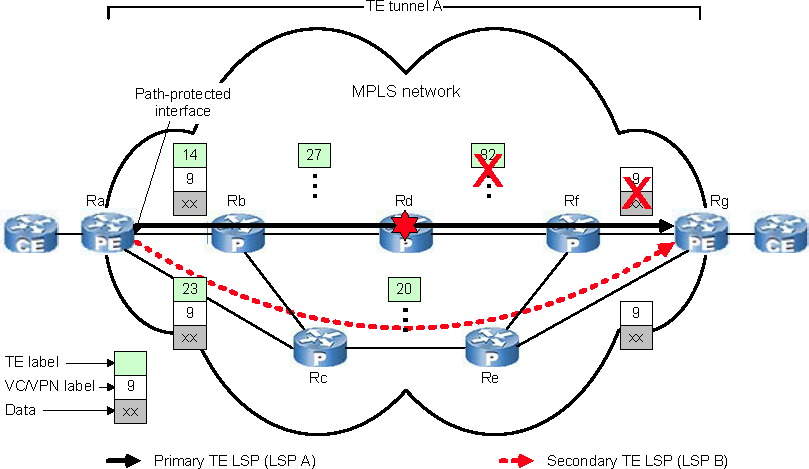Path protection is different from link/node protection in the following ways:
-
The traffic reroute is made at a PE device.
-
The rerouted traffic is to a different TE LSP.
Path protection can be used in any scenario where multiple TE LSPs exist between two PE devices and bear the same service at the same service level. If the primary LSP fails, the ingress PE device redirects the subscriber traffic to the secondary LSP. The primary and secondary LSPs share the same headend and tailend, but are diversely routed, as shown in Path-protection switching for a failed TE tunnel.
Figure 1. Path-protection switching for a failed TE tunnel 
In the figure, the primary TE LSP, Ra -> Rb -> Rd -> Rf -> Rg, is protected by the secondary TE LSP, Ra -> Rc -> Re -> Rg.
Typically, the restoration time for a path-protection mechanism is longer compared to the restoration time for a link/node protection mechanism.